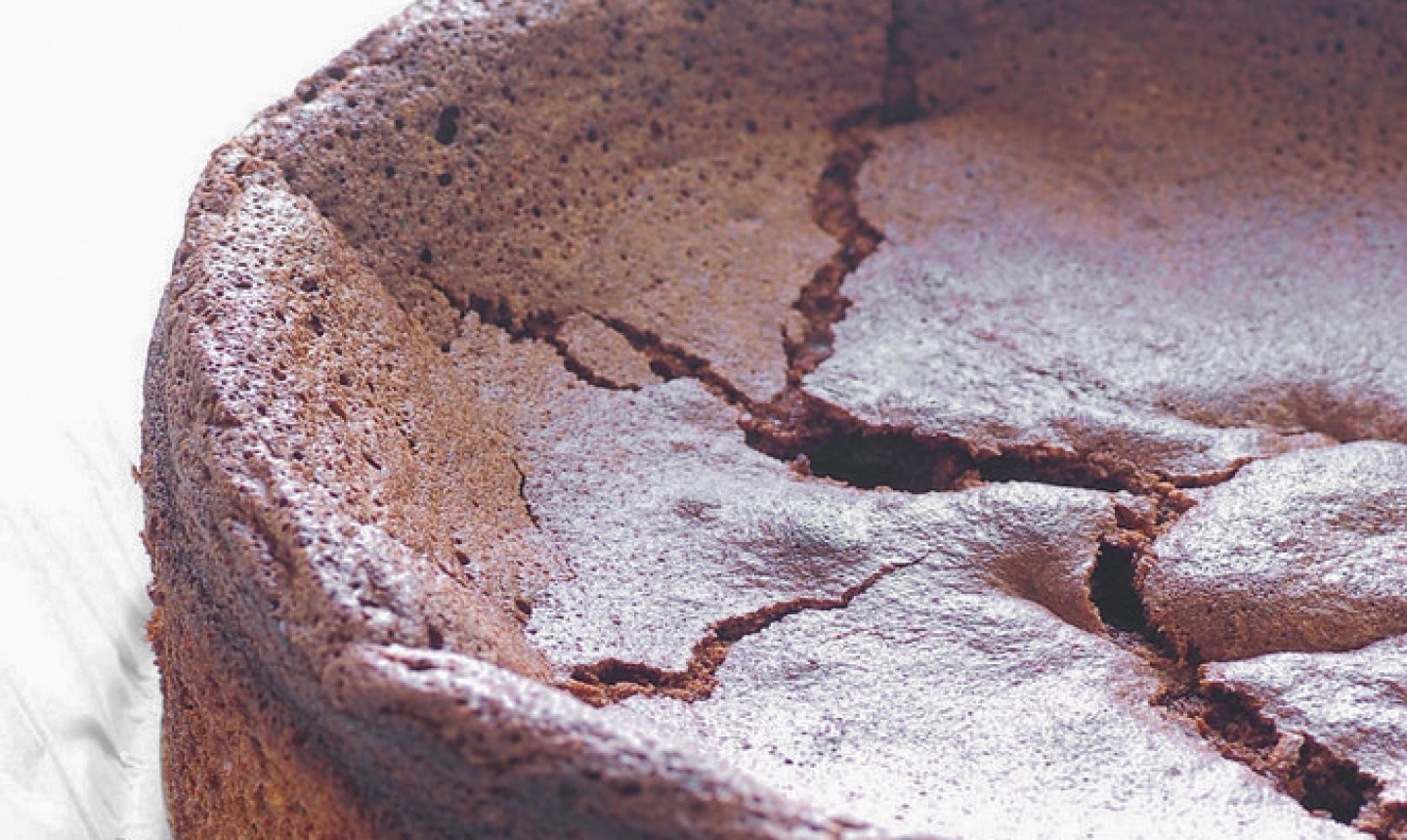
jules/Flickr
Picture this: you've whipped up a seemingly-perfect batch of cake batter, poured it carefully in your pan and slid it into the oven. You expect a beautiful cake to come out ... only to notice it's completely sunk. Talk about a total bummer.While cakes can fall for a lot of different reasons, these are the most common culprits — and how to deal with them.
Too Little or Too Much Moisture
If your cake isn't moist enough, it can sink in the center. But too much moisture can also ruin a cake. This happens most often in humid climates, where extra moisture can collect naturally in ingredients like flour. It causes cakes to rise quickly and then crater during the baking process.
What to do: Follow the recipe carefully, and when possible, weigh your ingredients rather than measuring them using cups. If you live in a humid climate, keep your dry ingredients in the freezer so they stay dry.
Poor Planning
If you forgot to add the eggs at the right time and then mixed them in later, you may pay the price with a fallen cake.
What to do: Read the recipe all the way through before you begin baking. Create a clean work area with all your ingredients pre-cut, prepared and measured. Having everything organized ahead of time will help you keep calm and follow the recipe.
Wrong Oven Temperature
Even if the temperature is set correctly on the dial, it doesn't necessarily mean that's the actual temperature inside your oven.
What to do: Check your oven periodically with a heatproof thermometer to make sure your dial is accurate.
Pro Tip Most cakes bake best in the 350 F range (give or take 25 degrees in either direction). If your recipe calls for something much higher or lower, it should explain why.
Under-Baking
If your cake looks puffy and golden on top but sinks and turns gummy in the middle, you probably didn't bake it long enough.
What to do: Don't depend on visual cues to figure out whether the cake is done. Test it by inserting a skewer or cake tester. If it comes out mostly clean, that means your cake is fully baked.
Not Enough Emulsification
The term sounds more complicated than it is. Emulsification, in baking, basically amounts to combining and binding two substances that normally wouldn't adhere (like butter and liquid). If you haven't creamed your butter mixture enough, then it may curdle when you add in the other ingredients and chances are your cake will fall.
What to do: Unless the recipe specifies that batter "should look curdled," it probably shouldn't. Be sure to cream your butter mixture before adding other ingredients to prevent an unwanted result.
Too Much Leavening
You need leaveners, like baking soda and powder, to make your cake rise. But too much can cause your cake to rise super-fast in the oven, then fall once you pull it out.
What to do: Be careful when measuring your baking soda and powder quantities, and make sure not to get them confused. (It's easy to accidentally add a tablespoon of one when you should've added just a teaspoon.)
Geography
Are you in a hot, humid climate? Or at a very high altitude? These conditions can make a big difference in how your baking turns out. High-altitude baking, for instance, can make your cakes come out flat even if you follow the recipe word for word.
What to do: Check to see if your cookbook or recipe source has special instructions for high-altitude baking. If not, Google an alternative — you're likely to find one.
How to Salvage a Fallen Cake
Here's the good news: as long as your cake is baked all the way through, you can rescue it. First, taste it to make sure another issue, like too much baking soda, hasn't messed up the flavor. If it hasn't, level the cake — you'll end up with a slightly thinner cake, but will still have a cake.
If the cake dropped too low to level and work as a layer, consider repurposing it. Leftover cake can be used as an ice cream topping, for example, or as the base of homemade cake pops.
Unfortunately, if your fallen cake is under-baked and still batter-like in the middle, you may be dealing with risky food-safety issues. In that case, it's best to throw out the cake and start from scratch.
Learn More Now
Get go-to tips and mouth-watering cake recipes in our class, Modern Methods for Classic Cakes.

I have a problem of mine crumbling I don't know what I do wrong I measure on my ingredients
Good information. My loaf cakes often sink in the middle since getting new oven.
My mothers recipe for pistachio cake made it for years. Same Bundt pan same recipe. The last several times it falls and it looks like to round tires sitting on top of one another. It call for cake mix, water, oil, milk, 5 eggs, 2 boxes of pistachio pudding. Mix for 4 minutes (electric mixer) Wish I could post a picture…it’s just pitiful ☹️
My first homade chocolate cake turned out perfect but I've tried twice since and they fall in the center as the timer is counting down the seconds to doneness it suddenly falls
Yes
My recipe calls for oil and 4eggs added to cake mix, almost always falls — help!
How to learn to use a confection oven in humid climates (Oregon)